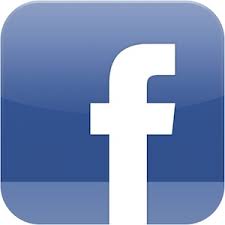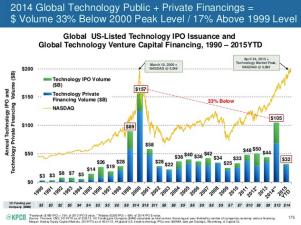Yesterday I had the pleasure to speak at the ISPO Communication Day in Munich — part of ISPO, the world’s largest sports industry trade show.  My topic was on which social media channel fits your story. And while you cannot be on every single social platform out there, you should at try to do at least 2 or 3 well. But more importantly today with so much happening in the social media sphere, the need to engage with millenials is becoming more and more apparent. They are becoming a major influencing factor for brands, trends, and markets. In the US alone they have close to $200 billion purchasing power each year. With social media being the environment they thrive in, time for brands to start building relationships with them there.
My topic was on which social media channel fits your story. And while you cannot be on every single social platform out there, you should at try to do at least 2 or 3 well. But more importantly today with so much happening in the social media sphere, the need to engage with millenials is becoming more and more apparent. They are becoming a major influencing factor for brands, trends, and markets. In the US alone they have close to $200 billion purchasing power each year. With social media being the environment they thrive in, time for brands to start building relationships with them there.
Authenticity is key
Ok, we all know that authenticity is key to humanizing your brand. But for millenials it is especially so. Last year, Forbes reported that 43% of millennials rank authenticity over content. The same report found that 62% of millennials are more likely to become a loyal customer if a brand interacts with them on social media. Because of how ingrained social platforms have become in our behaviour, audiences are more informed, aware and empowered than ever before. Social media has made us more cynical and more critical of what brands are doing. We can’t as easily be won over by a glossy ad – particularly digital natives who are increasingly more likely to prefer YouTube content over TV. So brands need to be transparent and honest.
You need to understand “dark social”
Want to market to millenials? Then you need to get acquainted with the term dark social. More and more consumers are conducting their conversations in private and share links away from major social platforms. They are taking to the likes of Snapchat, WhatsApp or other messaging apps. These are becoming new, opportunistic venues where brands could potentially start to engage in conversations that aren’t interruptive. Did you know that there are nearly 4 billion global active users of messaging apps, from WhatsApp and Facebook Messenger to WeChat and Kik? In fact, the top five apps in the world in terms of frequency of use are all messaging apps.
Move into unchartered waters
Most of us marketeers know that millenials don’t care for traditional advertising. They’re totally unaffected by it. That’s why social media marketing is such a big deal. The product is almost irrelevant. It’s the brand you have to sell, and social media is one of the best ways to do that. And while Facebook, Twitter, and Instagram have been (and still are) highly successful when it comes to brand awareness, none of them offer the same level of value and authenticity that Snapchat does. Snapchat has over 200 million users. With over 7 billion video views per day. Of course you cannot deliver large-scale conversations on Snapchat but maybe we need to follow our audience into unchartered marketing waters even if it would be nicer to stick to platforms we are used to and feel safe on. Maybe we do not know exactly the best way to use these one-on-one platforms yet but there are many brands that are already exploring. Content like product launches, behind-the-scenes. all unfiltered and happening in the now. Making the brand totally transparent and authentic with the potential of creating deeper, more personal relationships. And even if right now we may not have the mechanics to easily track these conversations, I am sure they will be coming sometime during 2016.
Influencers have the power
“People buy from people, not brands” – according to findings 92% of consumers trust recommendations from other users even if they may not know them. That is why it is important to understand how your brand is perceived out there. So think influencer marketing. Influencers have thepower when it comes to marketing services and products. Consumers today trust recommendations from family, friends, and social media influencers more than any type of paid marketing. And when someone is happy with your brand, they will share this with their social networks. The effect is unparalleled to any other marketing tool we have.
And don’t forget the IoT
Today’s world is becoming more and more connected. And millenials are expecting brands to be connected and able to offer them seamless person-to-digital experiences and interactions. Brands will need to move away from being interruptive and seeing themselves as a broadcaster to actually offering personalized solutions. Think of something alongside a reminder being sent to order an Uber to pick up your date for that restaurant reservation you have Friday night. Or which SPF cream to use for today’s sunshiny weather.


 Facebook is on a roll – the rate at which it is introducing new features is mind-blowing.
Facebook is on a roll – the rate at which it is introducing new features is mind-blowing. My topic was on which social media channel fits your story. And while you cannot be on every single social platform out there, you should at try to do at least 2 or 3 well. But more importantly today with so much happening in the social media sphere, the need to engage with millenials is becoming more and more apparent. They are becoming a major influencing factor for brands, trends, and markets. In the US alone they have close to $200 billion purchasing power each year. With social media being the environment they thrive in, time for brands to start building relationships with them there.
My topic was on which social media channel fits your story. And while you cannot be on every single social platform out there, you should at try to do at least 2 or 3 well. But more importantly today with so much happening in the social media sphere, the need to engage with millenials is becoming more and more apparent. They are becoming a major influencing factor for brands, trends, and markets. In the US alone they have close to $200 billion purchasing power each year. With social media being the environment they thrive in, time for brands to start building relationships with them there.

